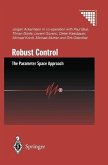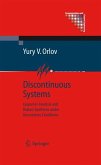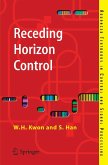The author covers the whole range of H-infinity control of time-delay systems: from controller parameterization implementation; from the Nehari problem to the four-block problem; from theoretical developments to practical issues. The major tools used are similarity transformation, the chain-scattering approach and J-spectral factorization.
Self-contained, "Robust Control of Time-delay Systems" will interest control theorists and mathematicians working with time-delay systems. Its methodical approach will be of value to graduates studying general robust control theory or its applications in time-delay systems.
Dieser Download kann aus rechtlichen Gründen nur mit Rechnungsadresse in A, B, BG, CY, CZ, D, DK, EW, E, FIN, F, GR, HR, H, IRL, I, LT, L, LR, M, NL, PL, P, R, S, SLO, SK ausgeliefert werden.
The book is composed of 231 pages, an Introduction and two parts. ... This book joins a number of others that have appeared in the past ten years on TDS. ... I found this book very interesting and informative. It contains recent results on robust control for single-input delay systems and will be very useful for Ph.D. students and researchers.
IEEE Transactions on Automatic Control 53 (2008) 636 - 637 (Reviewer: Olivier Sename)
The book contains many examples that are helpful for readers to gain better understanding of the underlying concepts and key ideas. The book can be a useful reference for researchers and industrial practitioners and can also be used as a text for a post-graduate level course on delay systems.
International Journal of Robust and Nonlinear Control 19 (2009) 611 - 612 (Reviewer: Lihua Xie)
The aim of this book is to present a systematic and comprehensive treatment of robust control of time-delay systems in the frequency domain... The text is well-written, easy to read and with many examples clarify the theoretical discussions. The book is self-contained and it is useful both for new-comers to the field and for researches and mathematicians who work in the area of control and time-delay systems.
Zentralblatt MATH 1119 (2007) (Reviewer: Mihail Megan)









